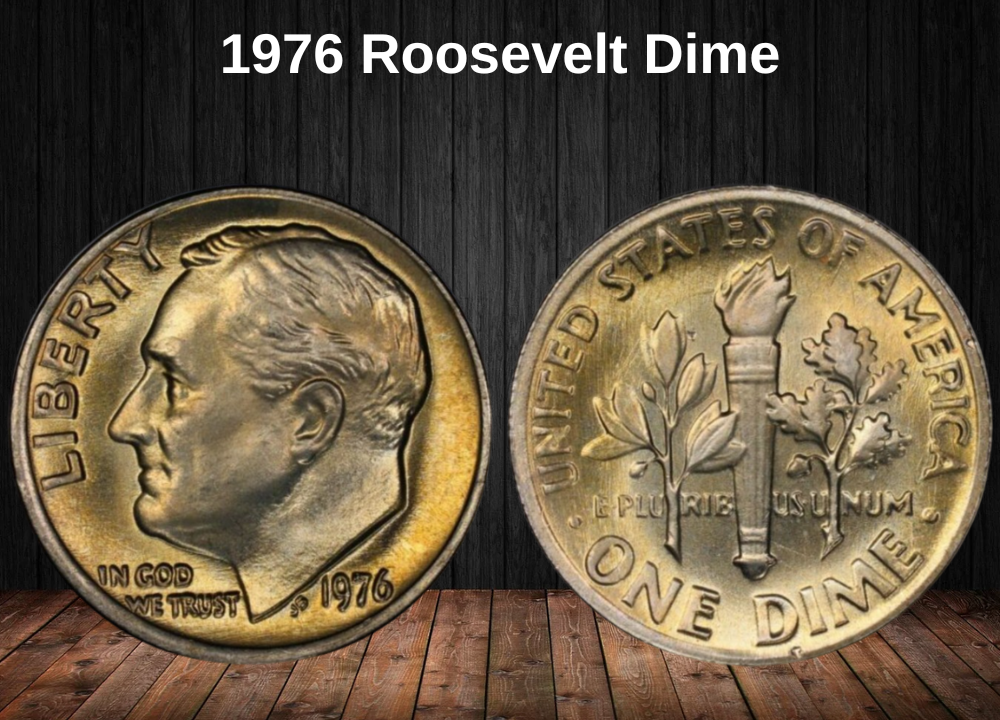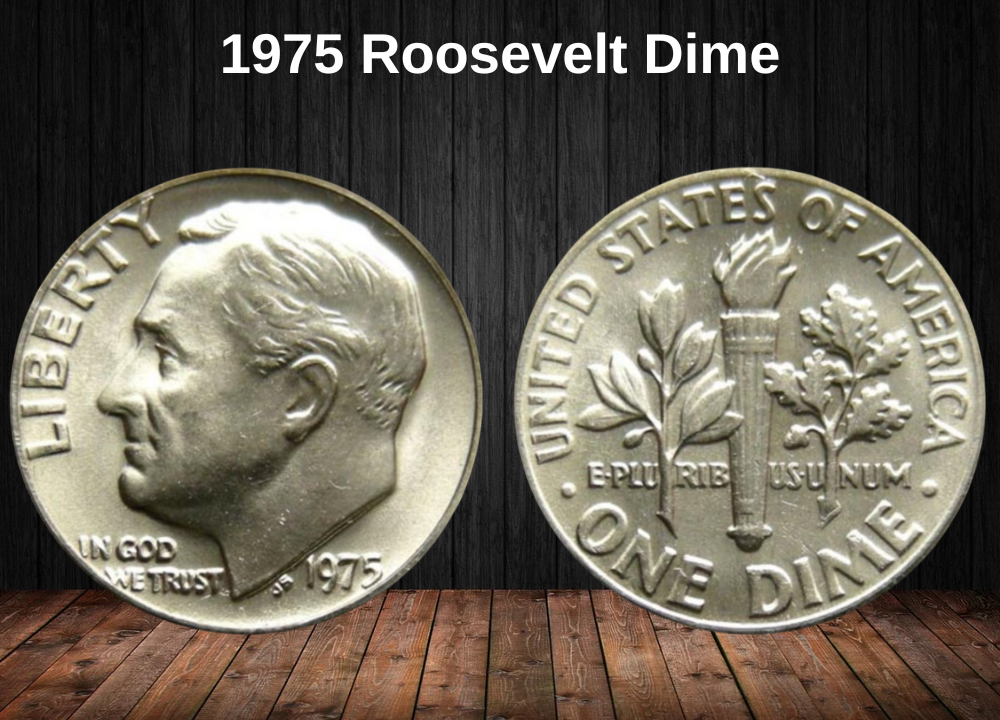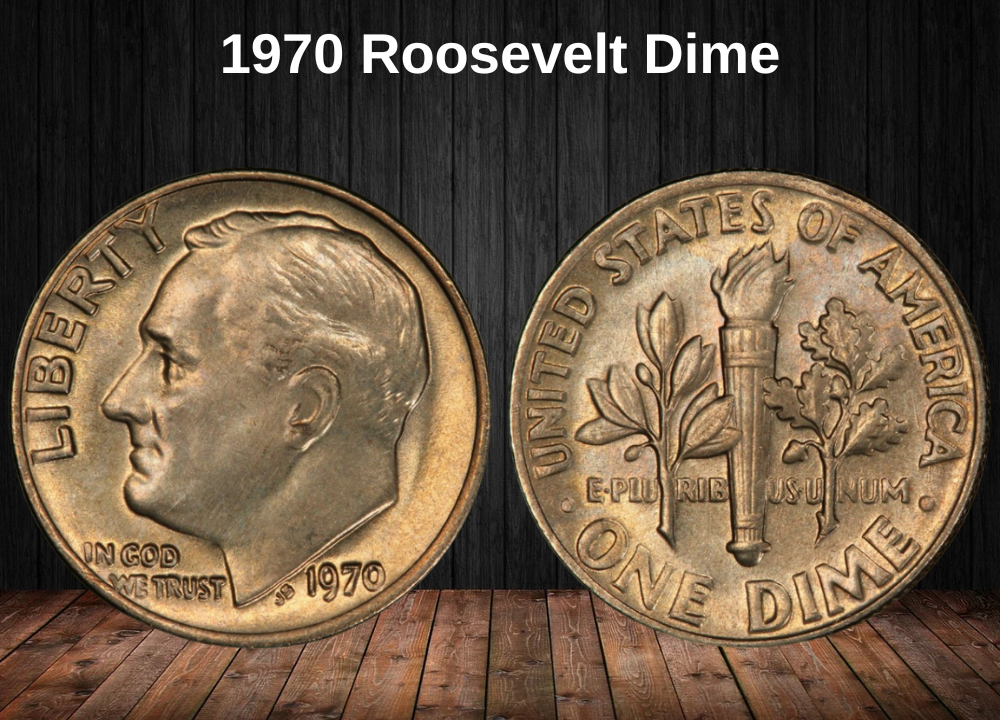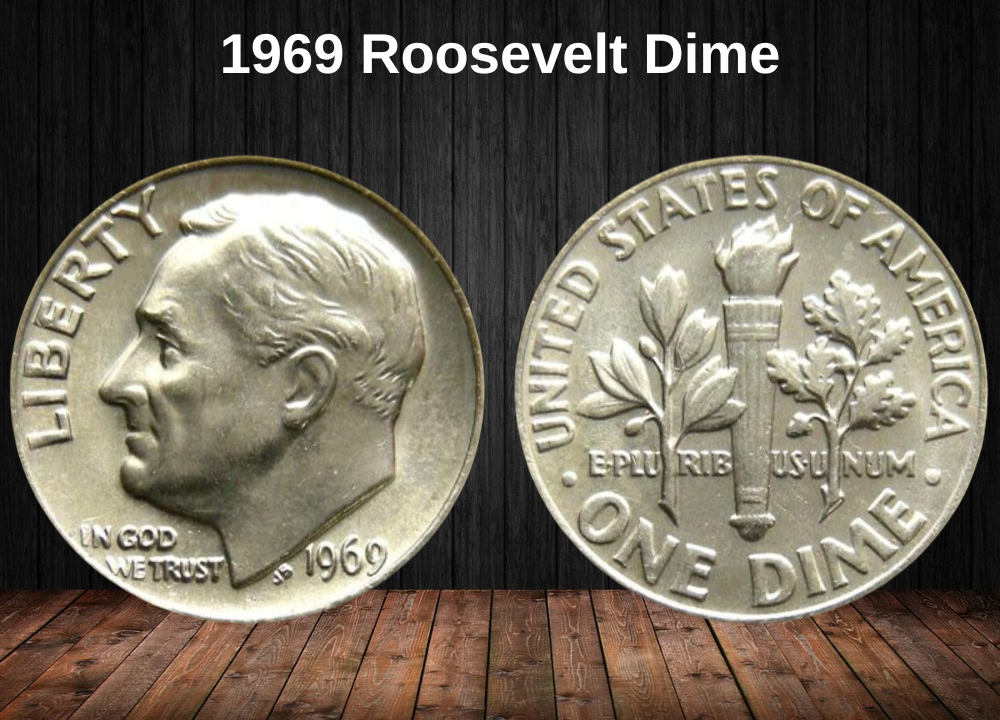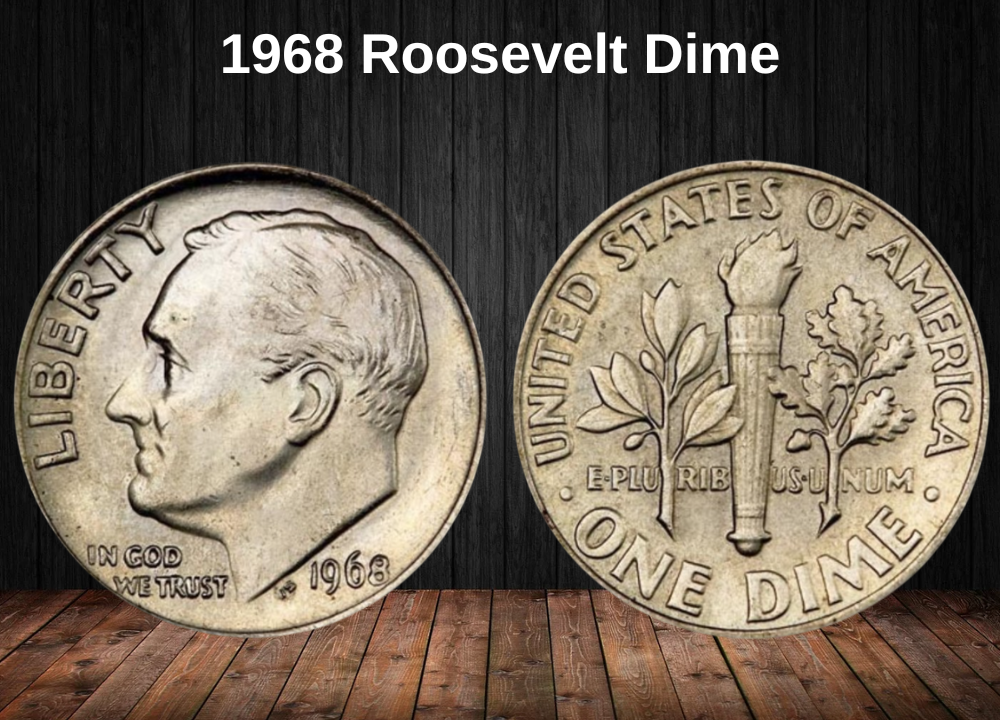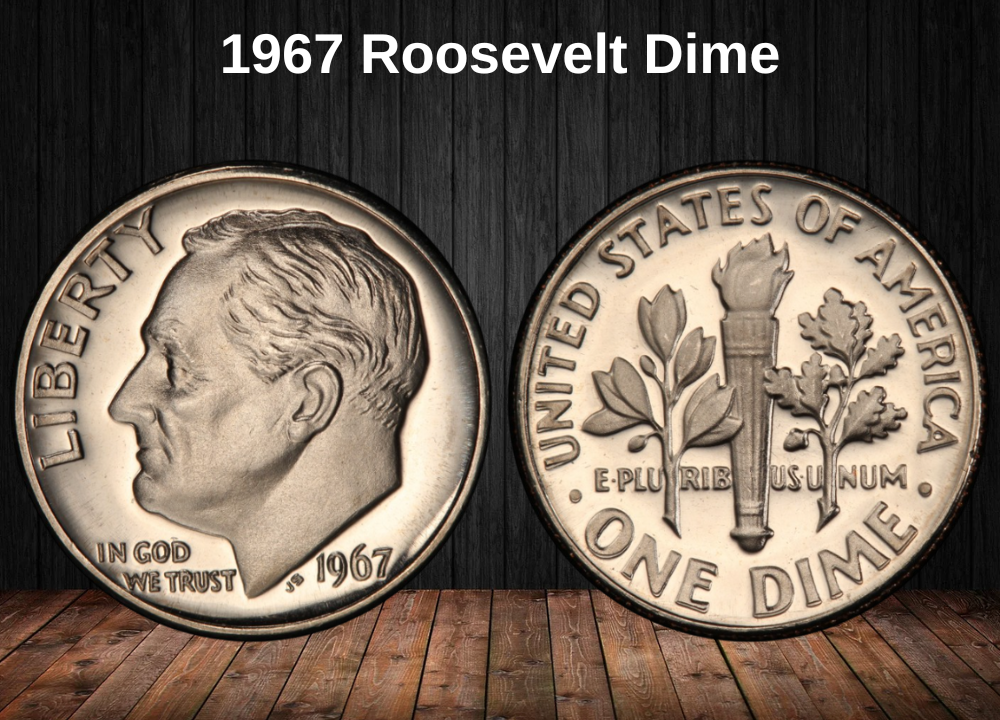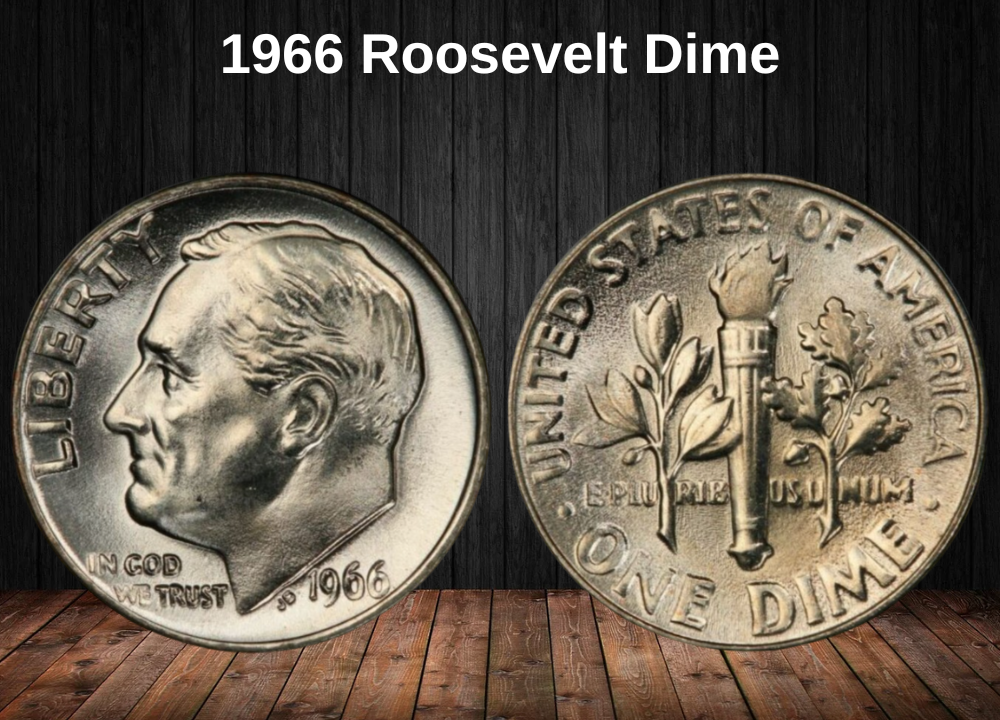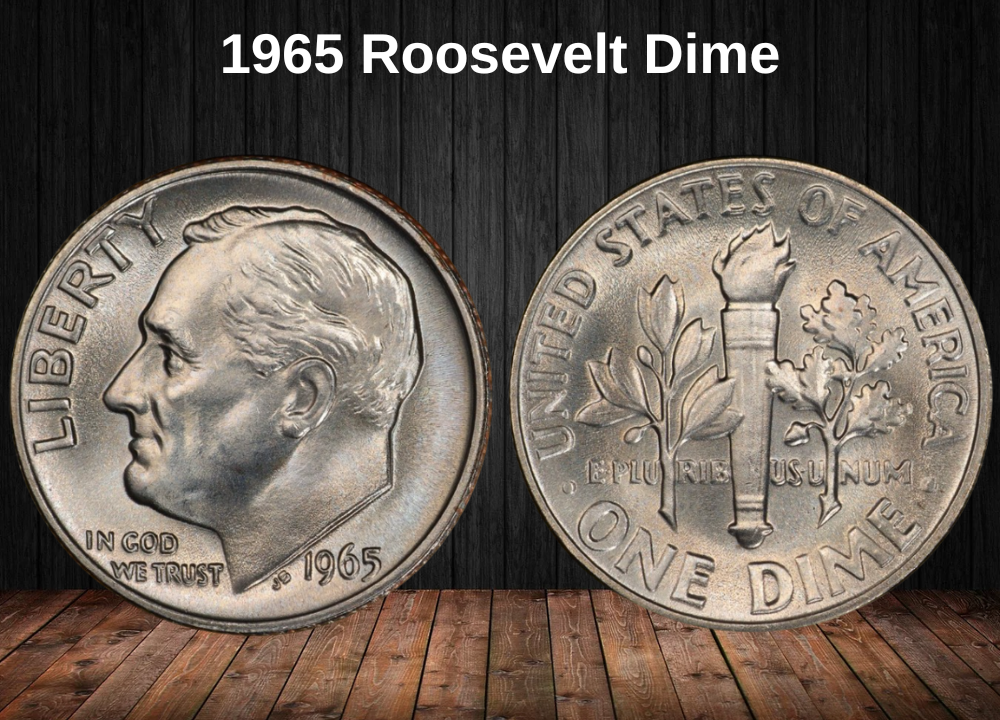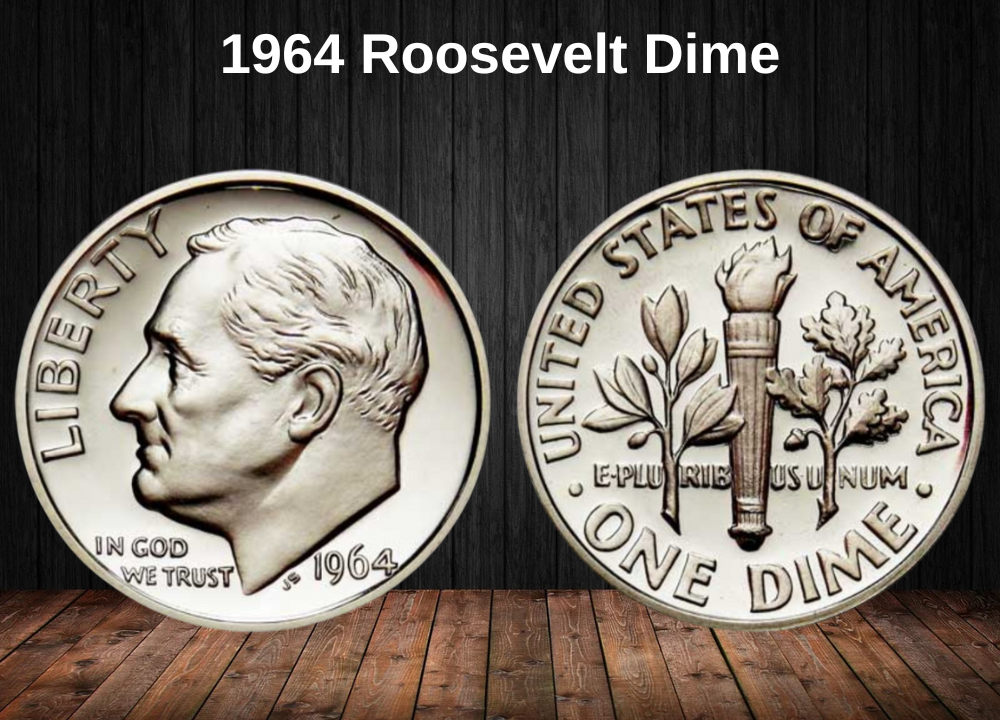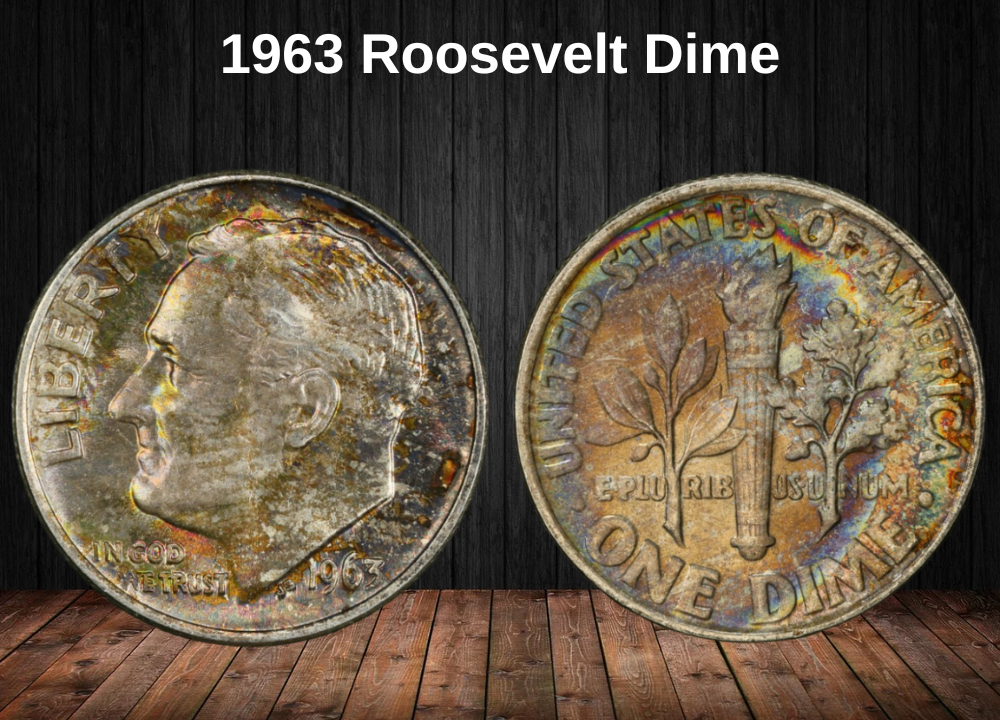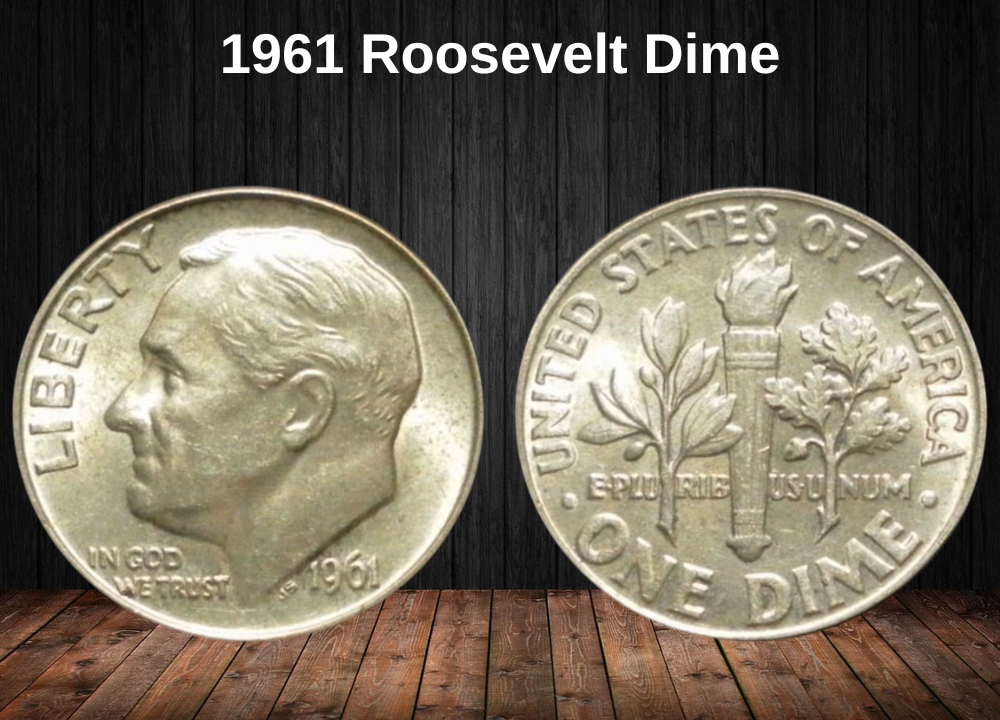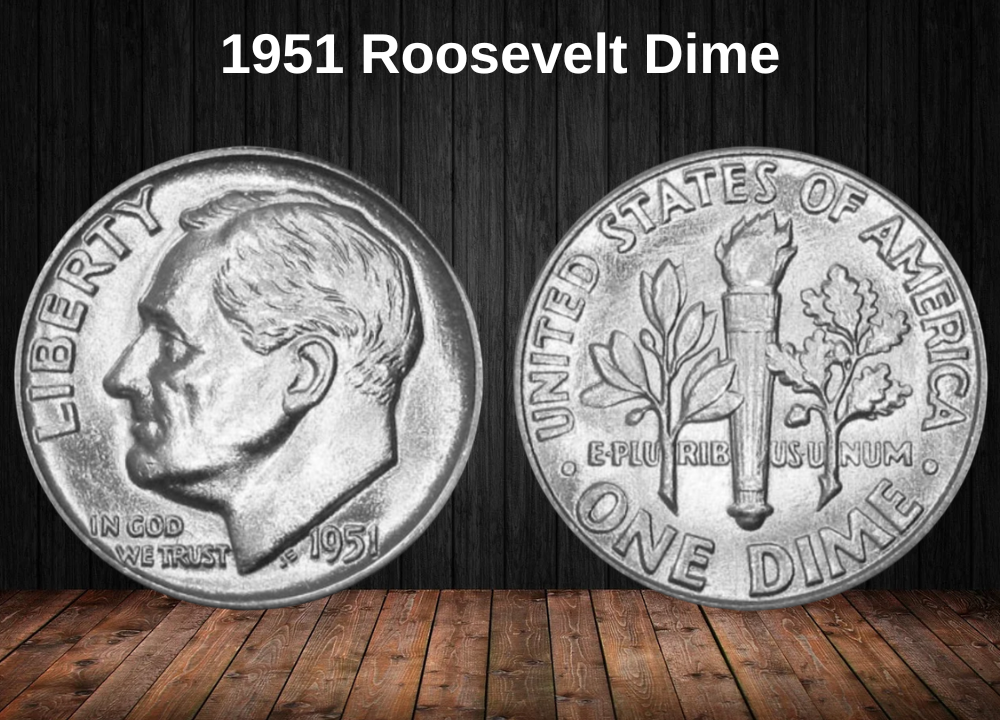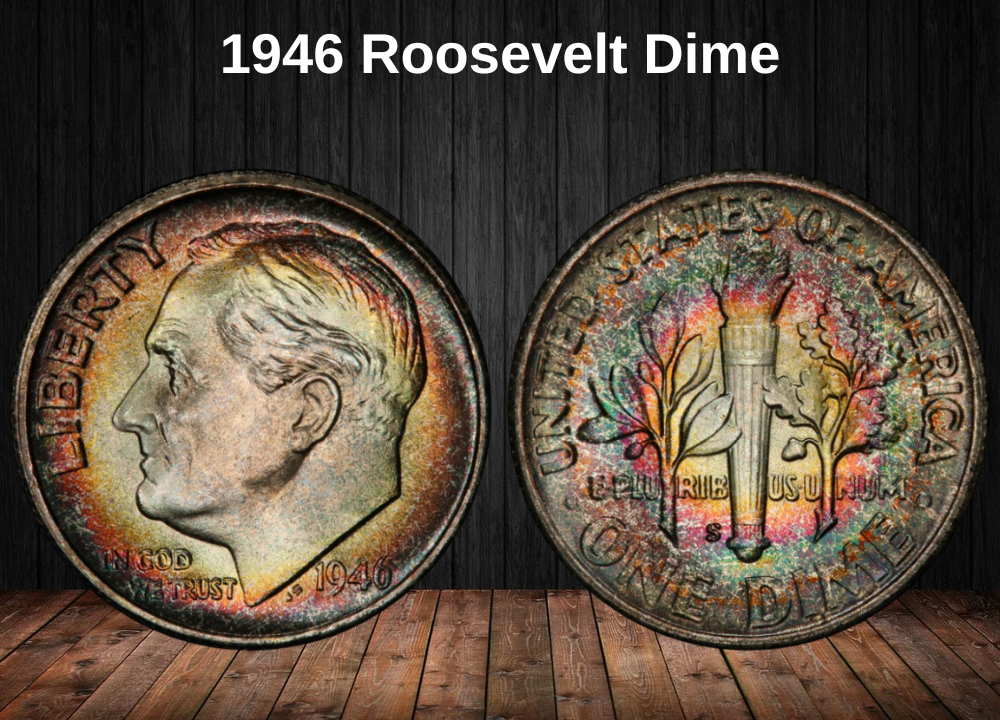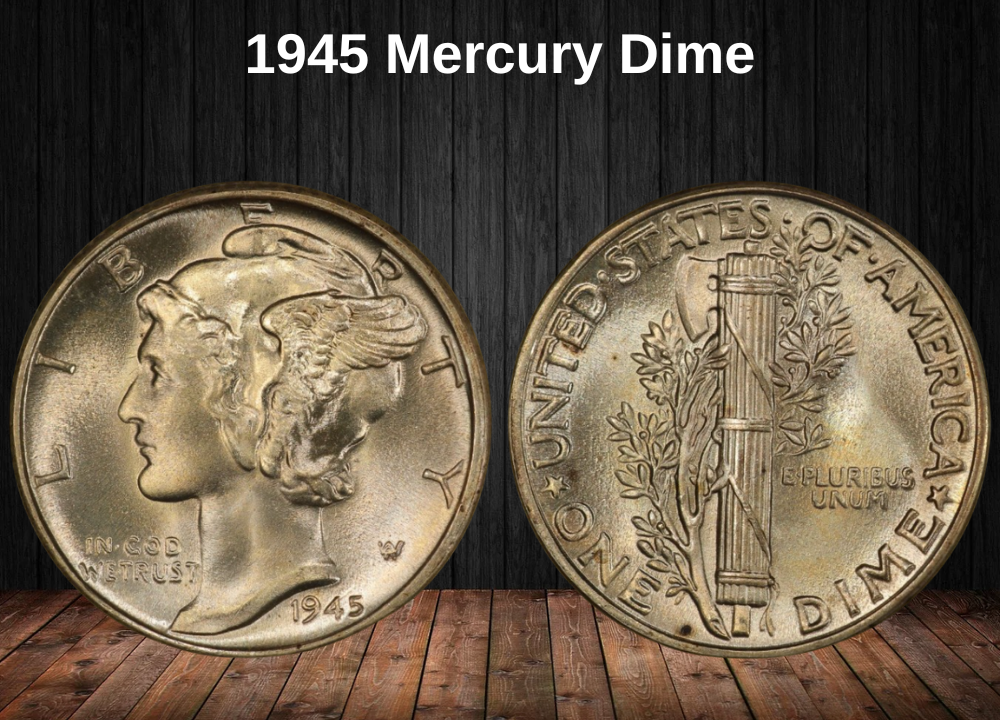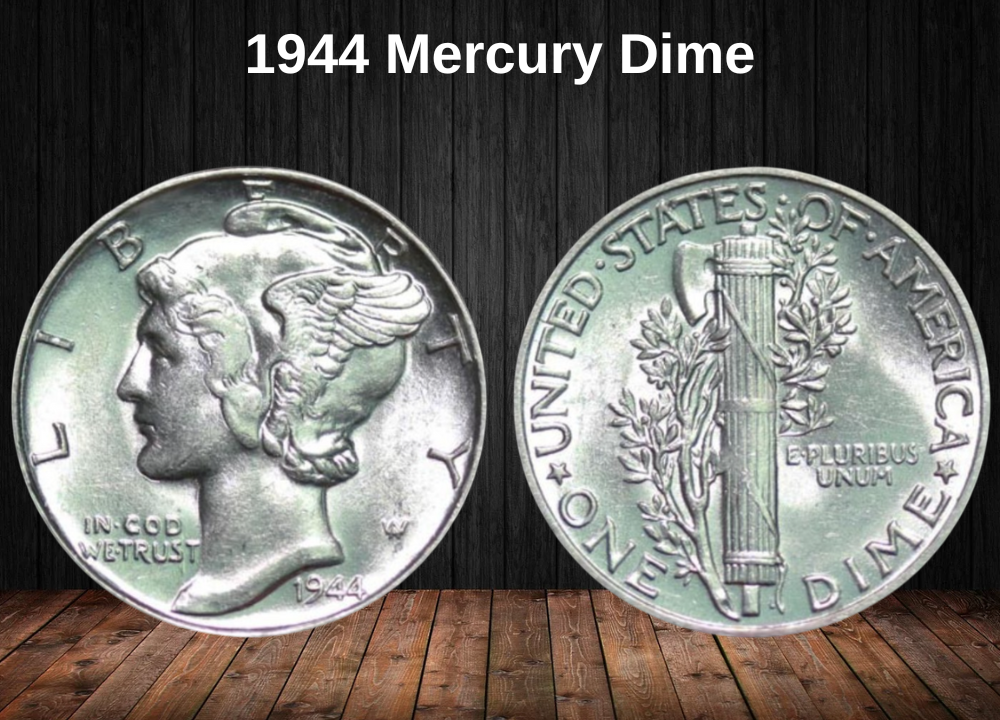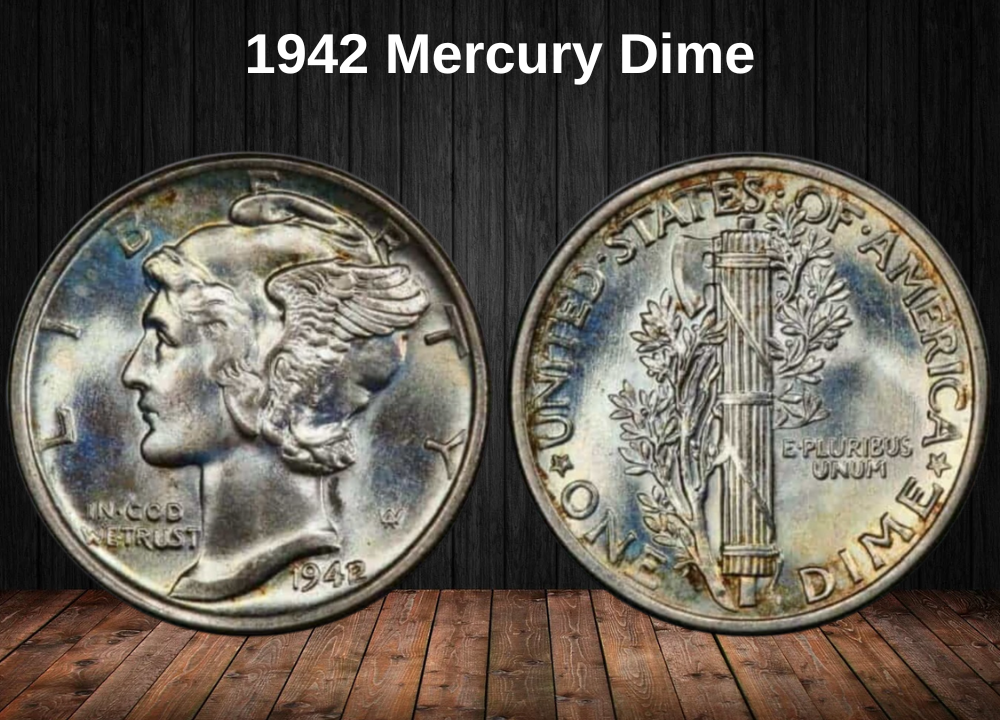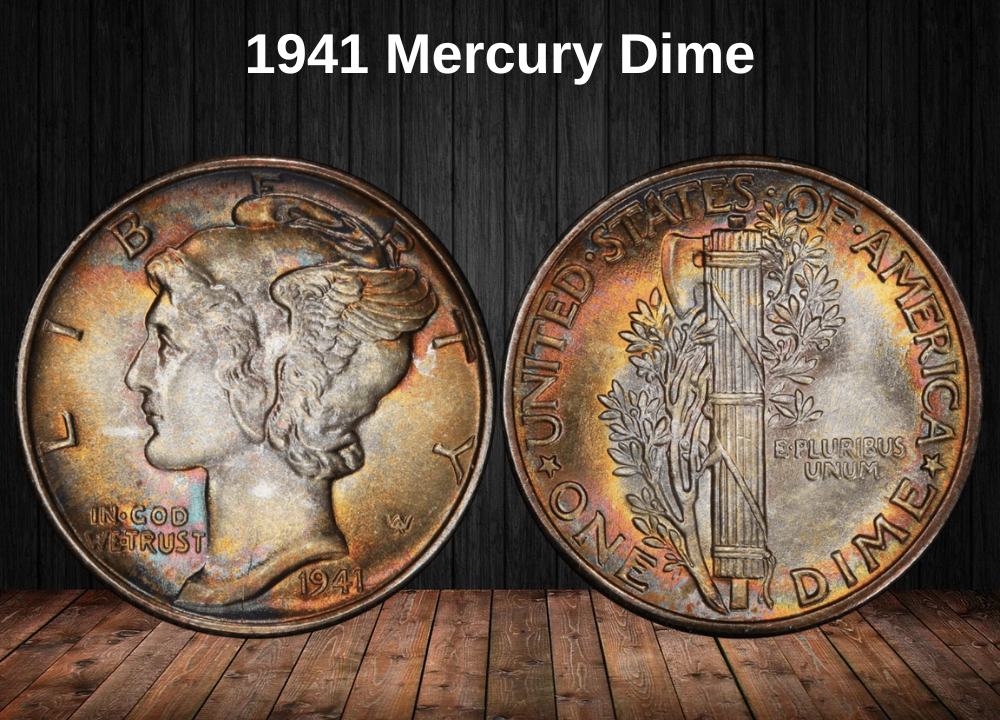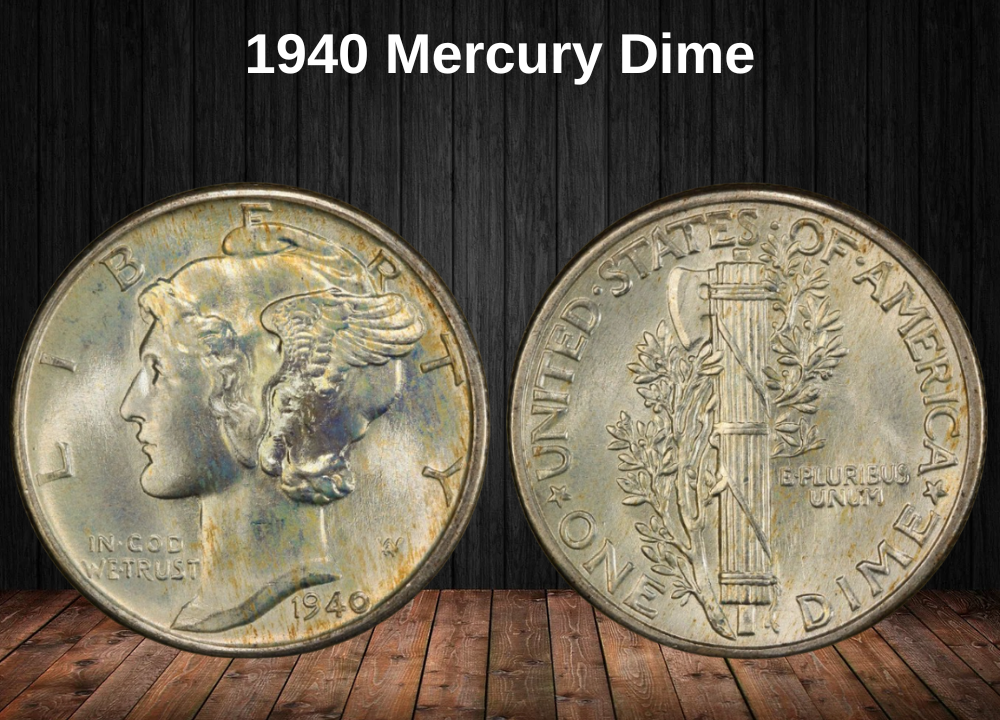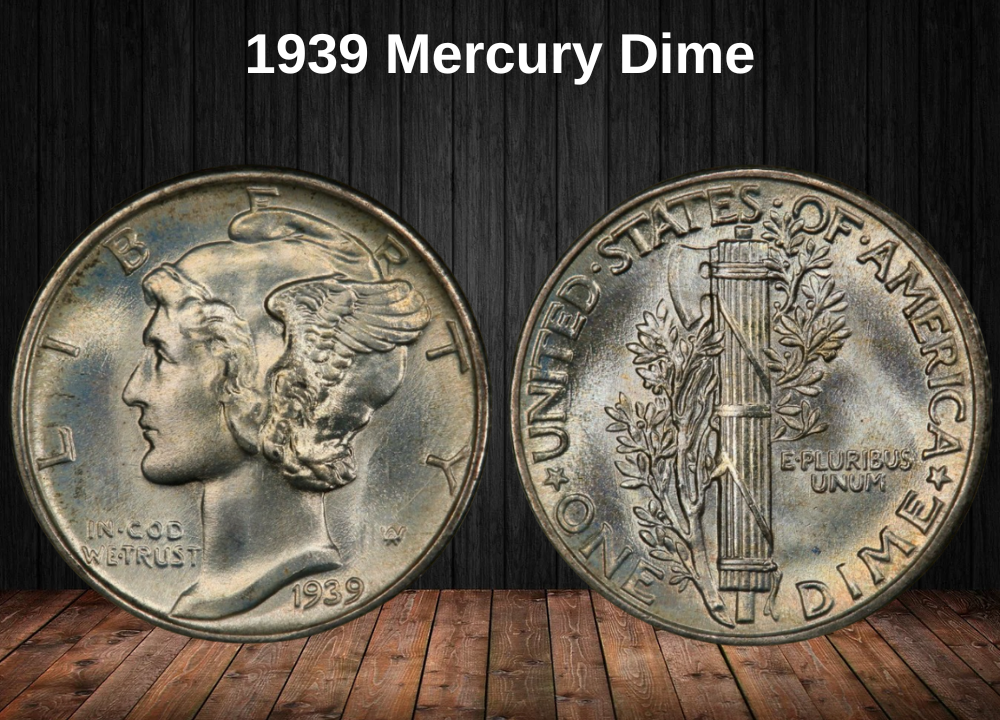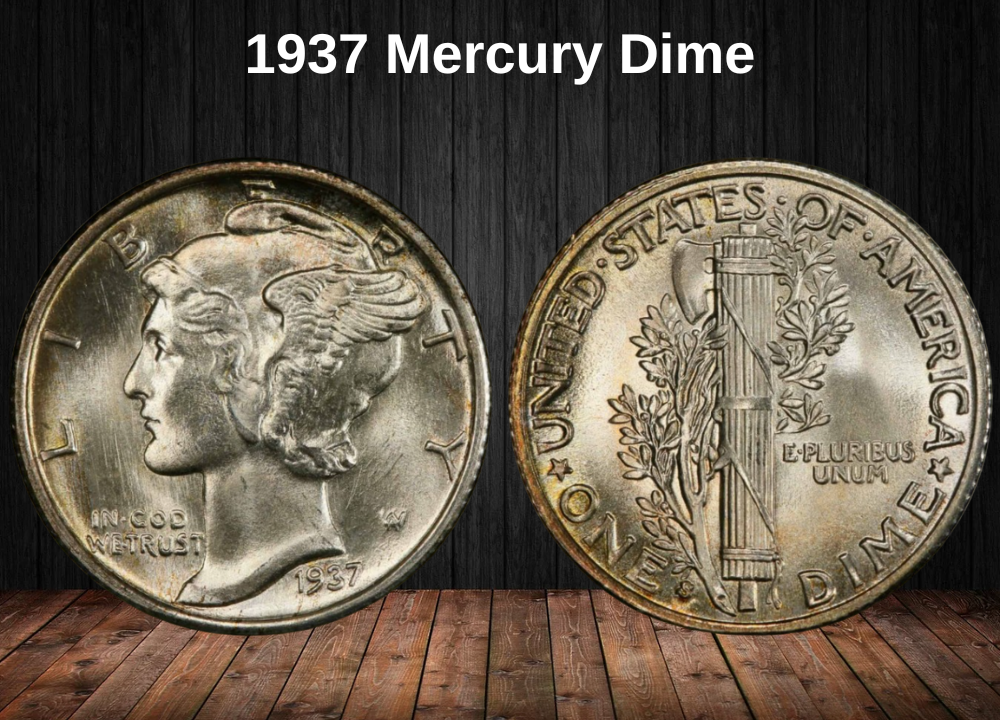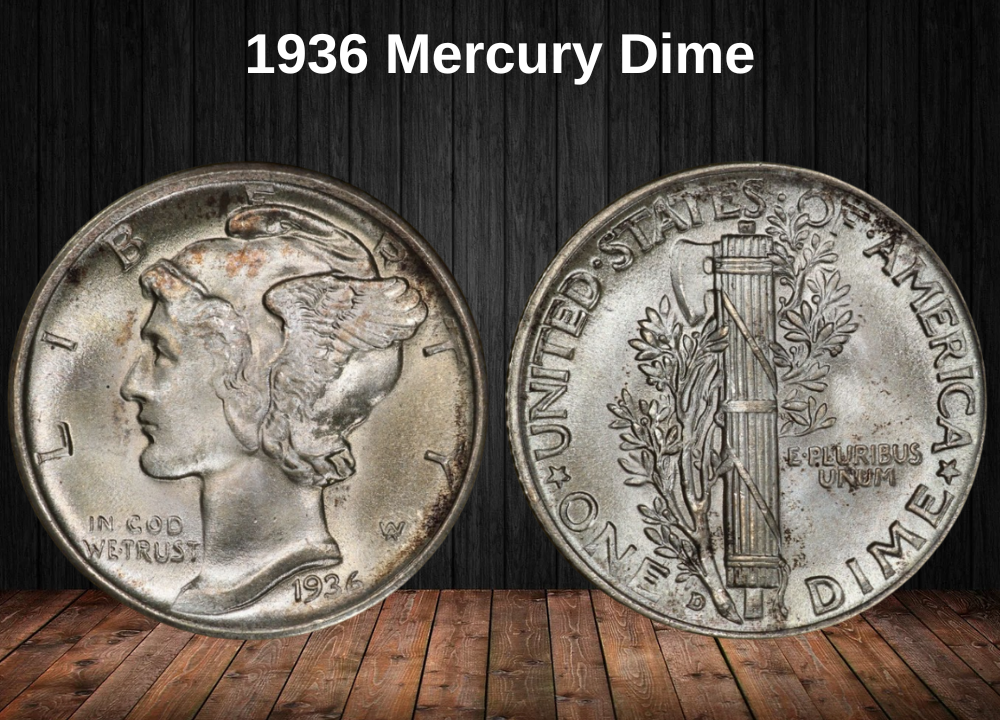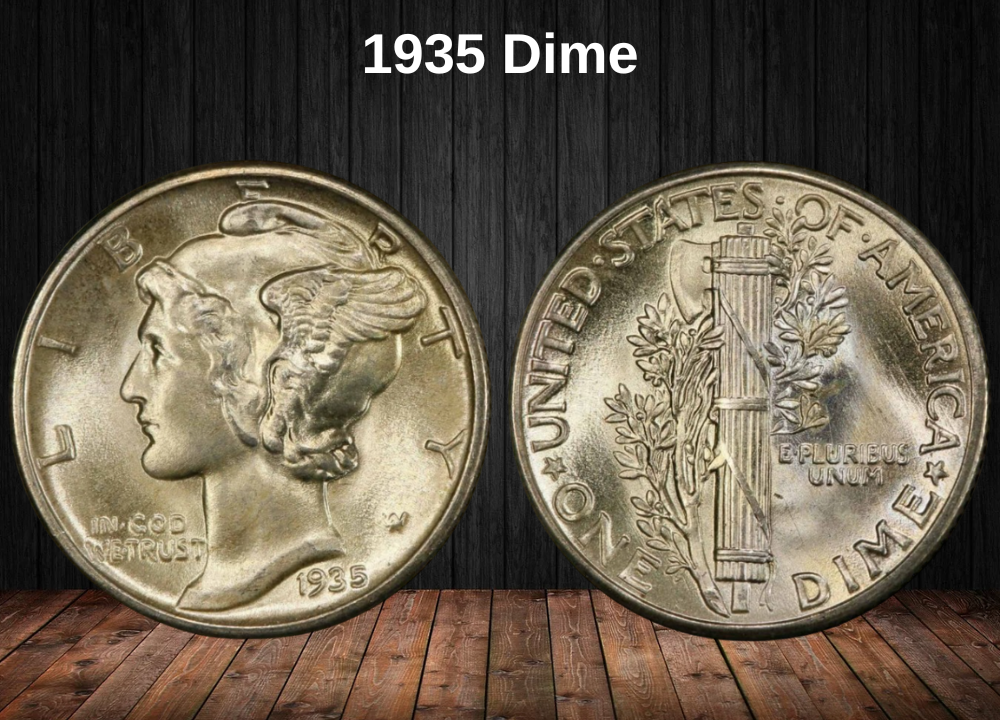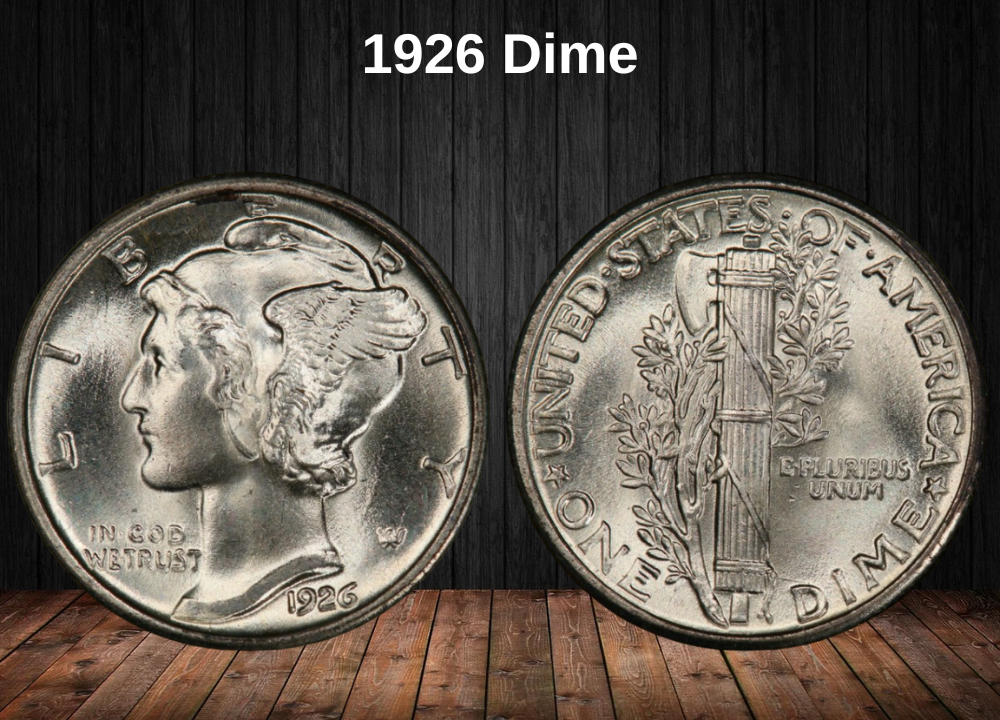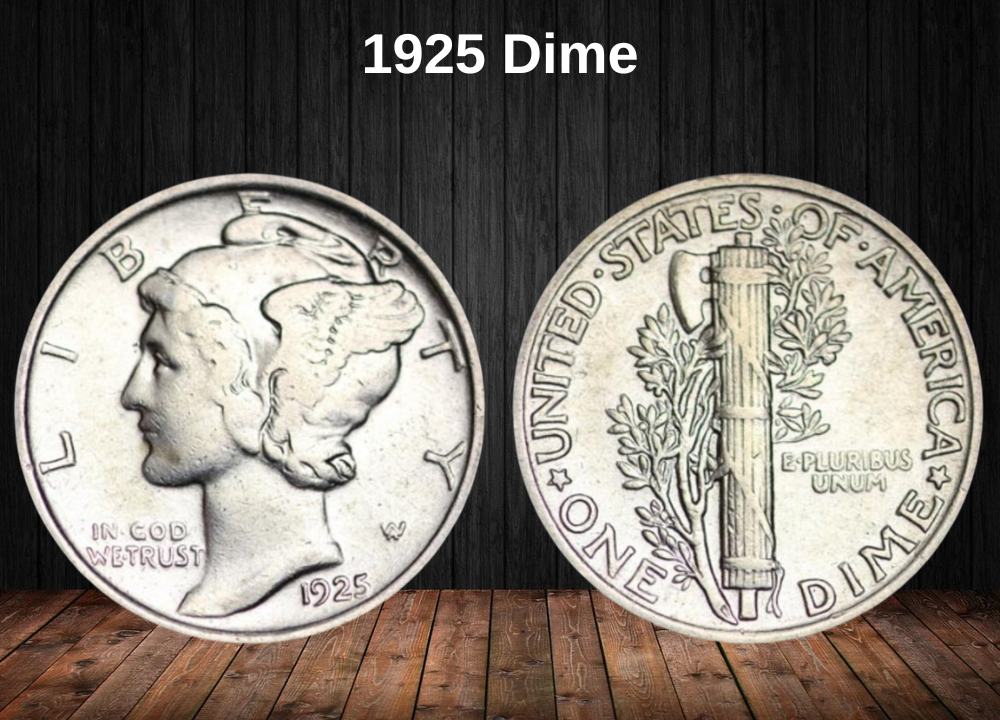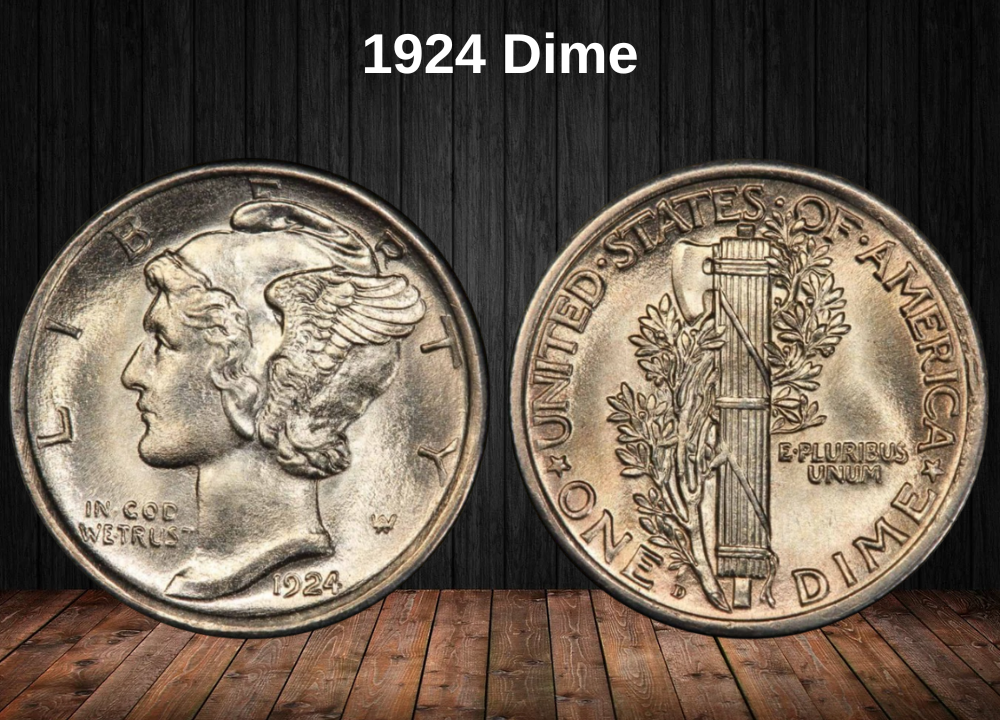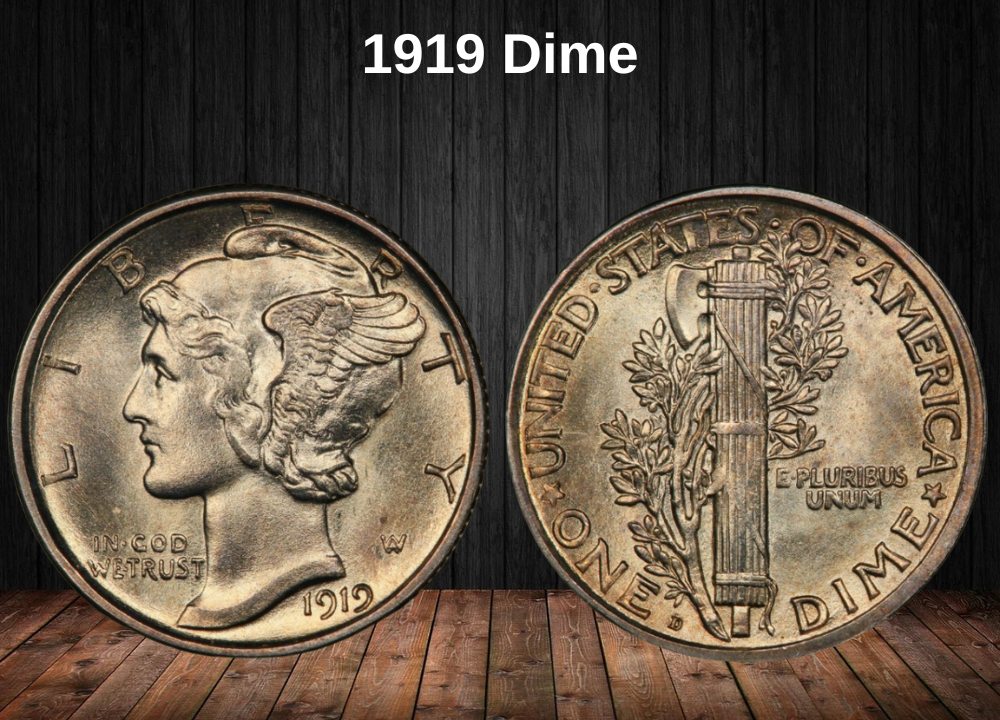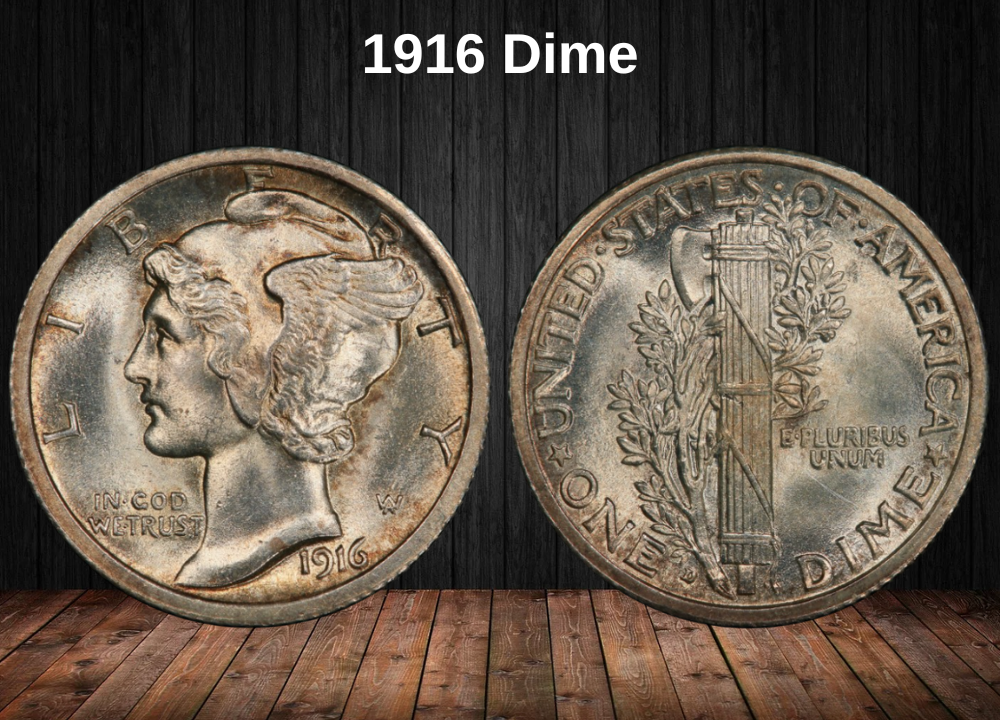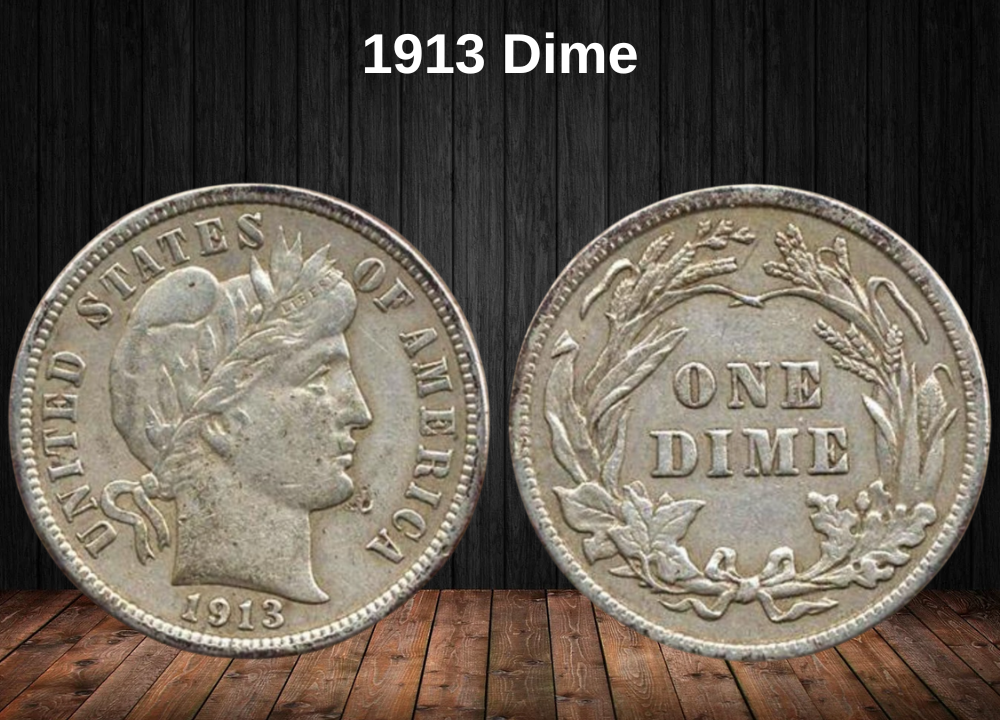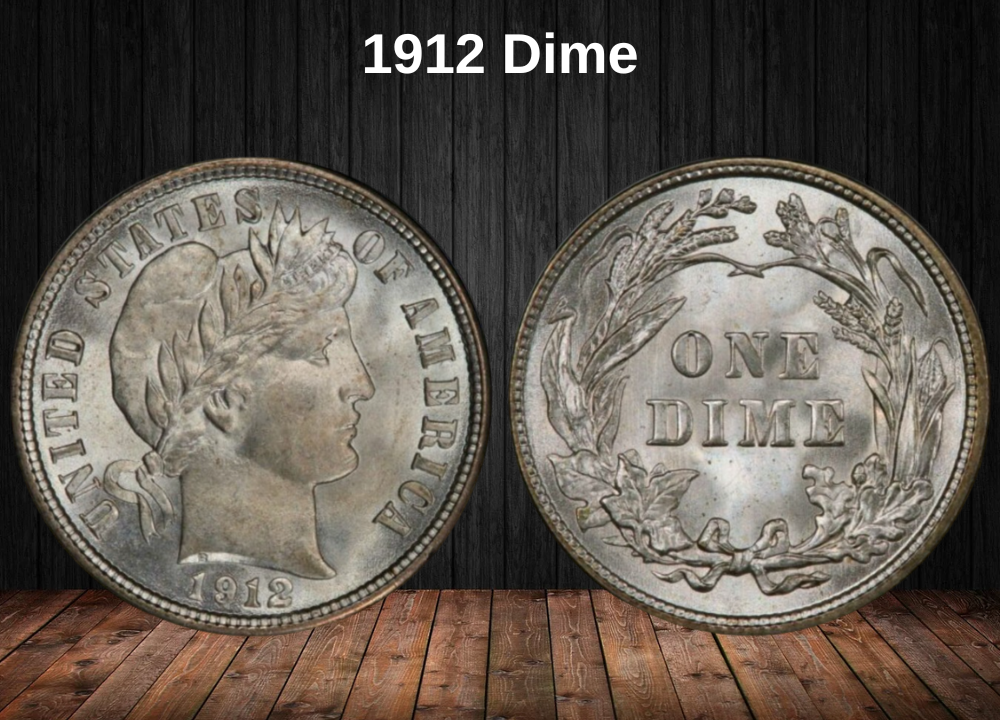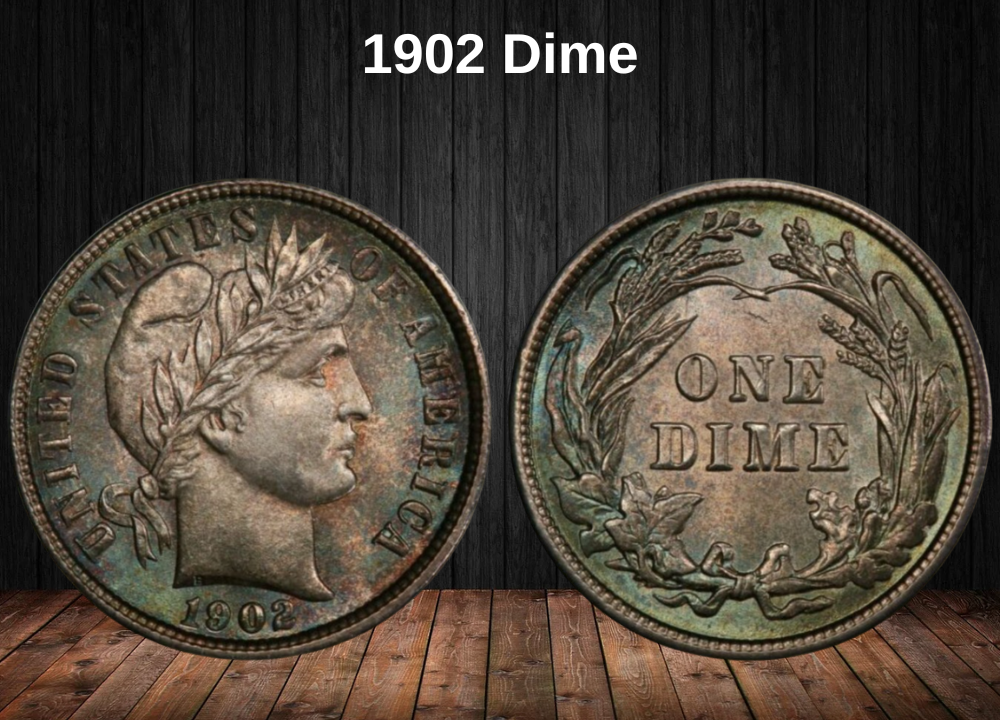Do you have a dime from 1938, and would like to know its value? Some old coins are highly sought after by collectors and can sometimes be worth several hundred or even thousands of dollars.
In this article, we look at the 1938 dime value. You will find information on what the different mint varieties are worth at different grades and how professional coin graders determine the value of 1938 dimes. In addition, we have included a brief history of the 1938 dime and a list of errors among the dimes from this mint year.
1938 Dime Value Chart
| Mint Mark | Good (G4) | Very Fine (VF20) | About Uncirculated (AU50) | Uncirculated (MS60) | Uncirculated (MS65) |
|---|---|---|---|---|---|
| 1938 No Mint Mark Dime Value | $4 | $5 | $7 | $16 | $53 |
| 1938 D Dime Value | $4 | $5 | $12 | $25 | $60 |
| 1938 S Dime Value | $4 | $5 | $12 | $30 | $65 |
History of the 1938 Mercury Dime

The 1938 Mercury Dime, officially called the Winged Liberty Head Dime, continued the iconic design by sculptor Adolph A. Weinman, first introduced in 1916. The obverse portrays Lady Liberty wearing a winged cap, symbolizing freedom of thought, while the reverse shows a fasces tied with an olive branch, symbolizing unity and peace.
By 1938, the U.S. economy was slowly recovering from the Great Depression, and silver coins like the Mercury dime were circulating widely in everyday transactions. However, mintages were lower compared to the mid-1930s, which makes higher-grade examples from 1938 more collectible today.
Features of the 1938 Mercury Dime
The 1938 Mercury Dime, officially called the Winged Liberty Head Dime, was designed by Adolph A. Weinman, one of the most influential sculptors in early 20th-century American coinage. First introduced in 1916 to replace the Barber Dime, Weinman’s design remained in production until 1945 and is today regarded as one of the most artistic and enduring designs of the U.S. Mint.
The 1938 issue was struck during the later years of the Great Depression, which influenced both coin production and circulation. While overall mintages were lower than some previous years, 1938 dimes remain relatively common in circulated grades. However, Full Bands examples and coins in high Mint State grades are much scarcer and command strong premiums among collectors.
Obverse of the 1938 Dime
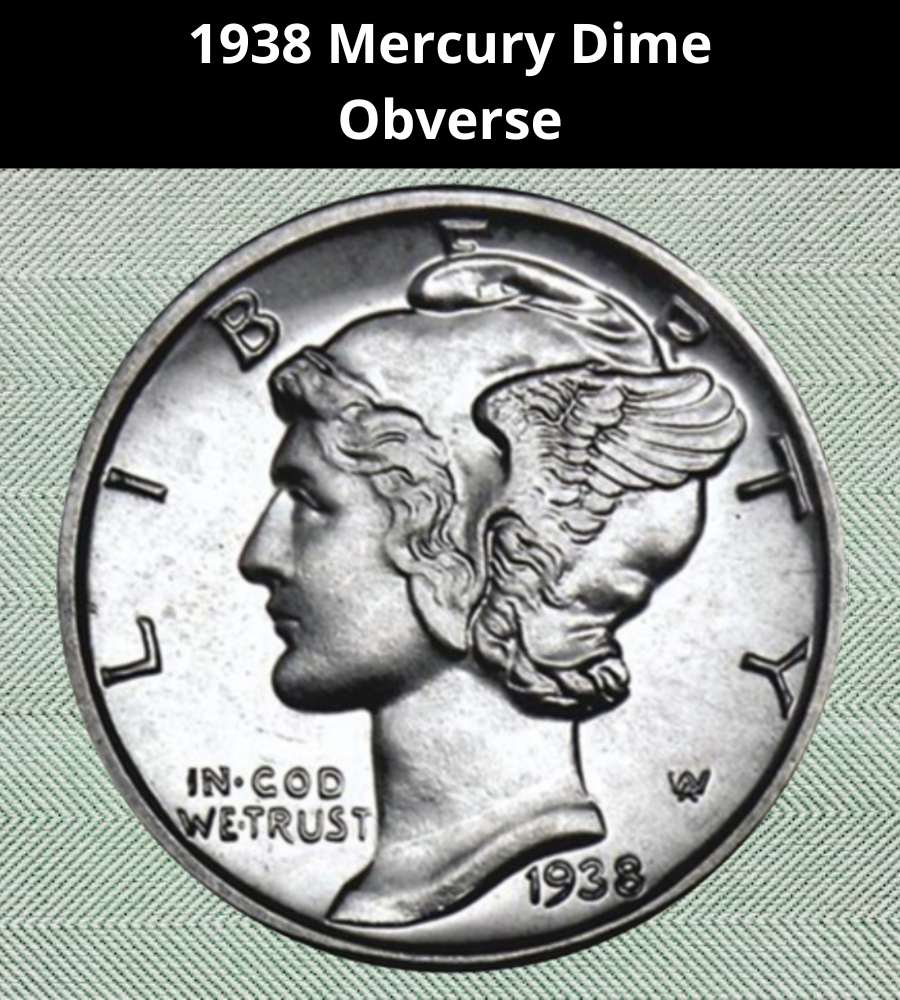
The obverse depicts Lady Liberty facing left, wearing a winged Phrygian cap symbolizing freedom of thought. Its resemblance to the Roman god Mercury gave the coin its widely known nickname: Mercury Dime.
Inscriptions on the obverse include:
- LIBERTY across the upper rim
- IN GOD WE TRUST to the left of Liberty’s neck
- The date 1938 at the lower right
- Designer’s initials AW near the neckline
Reverse of the 1938 Dime
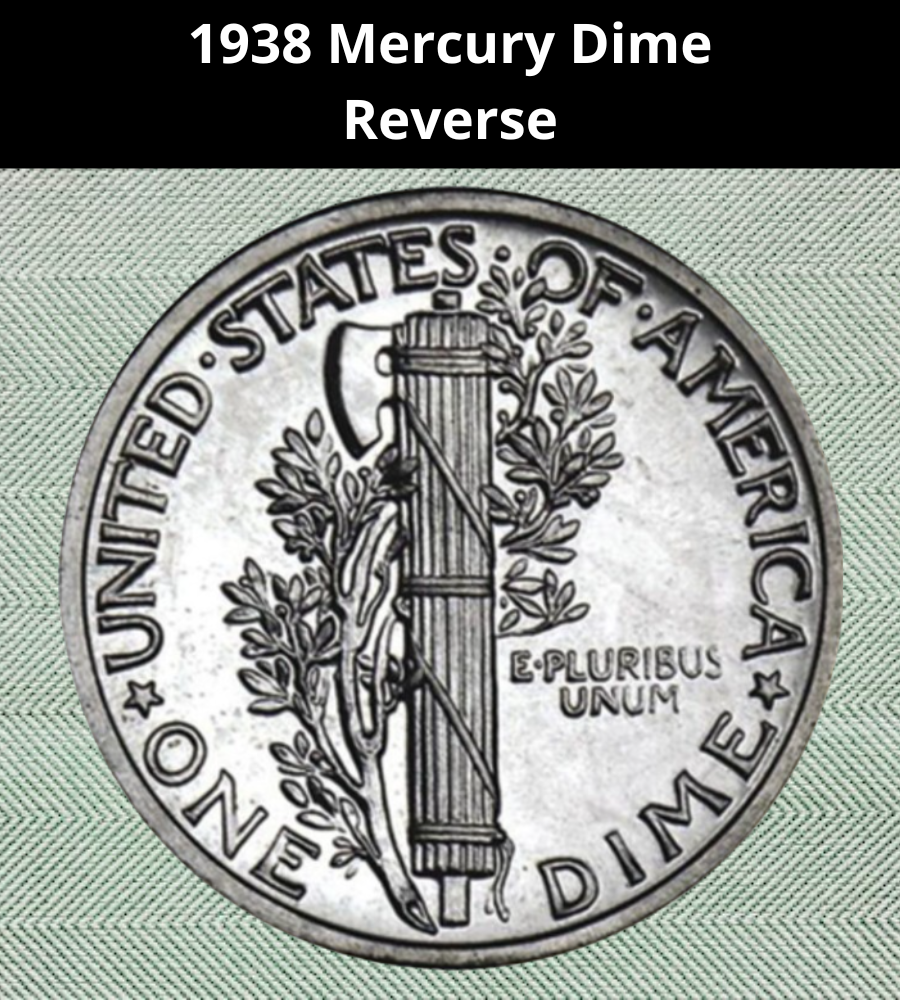
The reverse shows a fasces, a bundle of rods tied with an axe, representing unity and strength. Next to it is an olive branch, symbolizing peace. Together, the imagery reflected America’s pursuit of balance between power and harmony in the late 1930s.
Inscriptions on the reverse include:
- UNITED STATES OF AMERICA around the upper rim
- E PLURIBUS UNUM to the right of the fasces
- ONE DIME at the bottom
- The mint mark (D for Denver, S for San Francisco, or blank for Philadelphia) placed to the right of the “E” in ONE
1938 Dime Specifications
- Face Value: $0.10 (ten cents)
- Shape: Round
- Composition: 90% silver, 10% copper
- Type: Standard circulation coin
- Diameter: 17.91 mm (0.705 in)
- Weight: 2.50 g (0.08038 troy oz)
- Silver Weight: 2.25 g (0.07234 troy oz)
- Minting Technique: Milled
- Thickness: 1.35 mm (0.053 in)
- Edge: Reeded
1938 Mercury Dime Grading
Collectors and dealers use the Sheldon scale, ranging from 1 to 70, to determine the condition and market value of the 1938 Mercury Dime. Lower numbers indicate coins with heavy circulation wear, while higher grades are reserved for coins in exceptional preservation, with no signs of handling.
At the top of the scale are Mint State (MS) coins, starting at MS60, which are uncirculated examples that may display small contact marks, and reaching up to MS70, a flawless coin with perfect surfaces and strike.
Here is a breakdown of how the 1938 Mercury Dime is typically graded:
| Grade Number | Grade Name | Description |
|---|---|---|
| 1 | Basal State-1 | Barely identifiable, only faint outlines remain visible. |
| 2 | Fair | Extremely worn, but still recognizable as a dime. |
| 3 | Very Fair | Slightly clearer than Fair, but still heavy wear overall. |
| 4–6 | Good | Outlines of Liberty and the fasces are visible, details are mostly flat. |
| 7–10 | Very Good | Liberty’s winged cap and fasces visible, though still weak and worn. |
| 12–15 | Fine | Moderate wear, more definition visible in Liberty’s wings and fasces. |
| 20–30 | Very Fine | Light to moderate wear, lettering sharp, finer details becoming clearer. |
| 40 | Extremely Fine (EF/XF) | Minor wear only on the highest points, most design details remain sharp. |
| 50 | About Uncirculated (AU) | Slight traces of wear, most luster intact, strong eye appeal. |
| 60 | Mint State (MS60) | Uncirculated coin, though with noticeable contact marks or weak strike. |
| 65 | Mint State (MS65) | Strong strike, attractive luster, very few minor imperfections. |
| 70 | Mint State (MS70) | A perfect coin with no flaws visible even under magnification; extremely rare. |
1938 Mercury Dime Value Guides
1938 No Mint Mark Dime Value (Philadelphia)
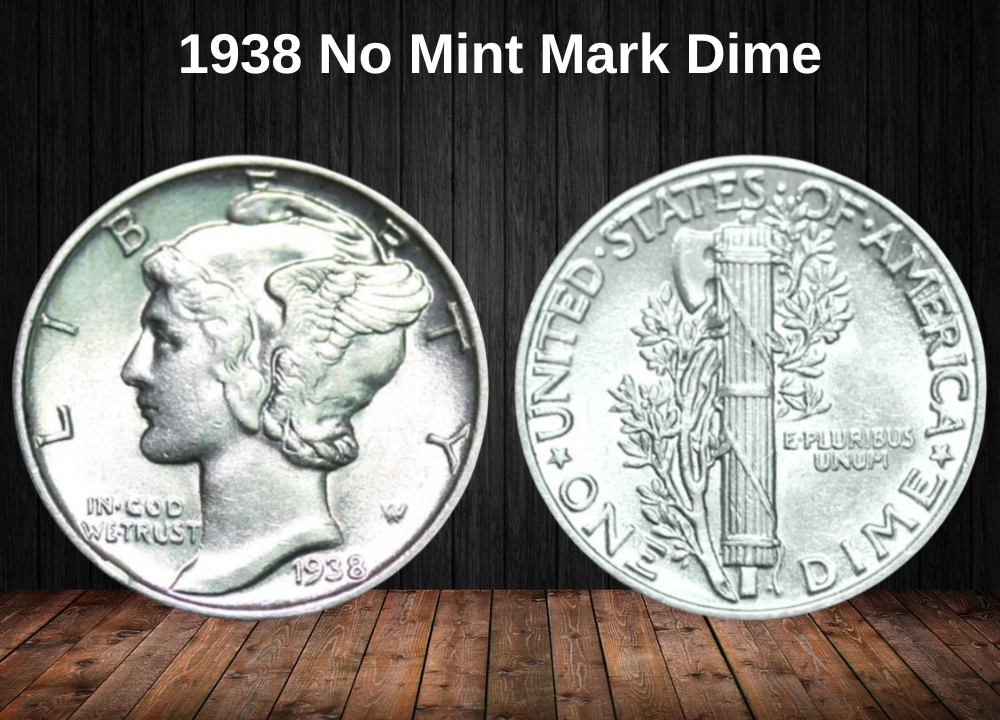
The Philadelphia Mint struck 22,198,728 dimes in 1938, all without a mint mark. Because of the large mintage, circulated examples are easy to find.
- In lower grades (Good to Fine), values are nearly identical across all 1938 mint varieties.
- At higher grades, however, the Philadelphia issues are worth slightly less, with an MS60 valued at $16, around $10–12.50 cheaper than the Denver or San Francisco coins.
- The auction record for a 1938 no mint mark MS67 dime is $1,150 (2006).
- Full Bands (FB) varieties are significantly more valuable, with one example reaching $14,375 (2006) in MS68.
Specs:
- Composition: 90% silver, 10% copper
- Weight: 2.5 g
- Diameter: 17.9 mm
- Thickness: 1.95 mm
- Edge: Reeded
1938 Proof Dime
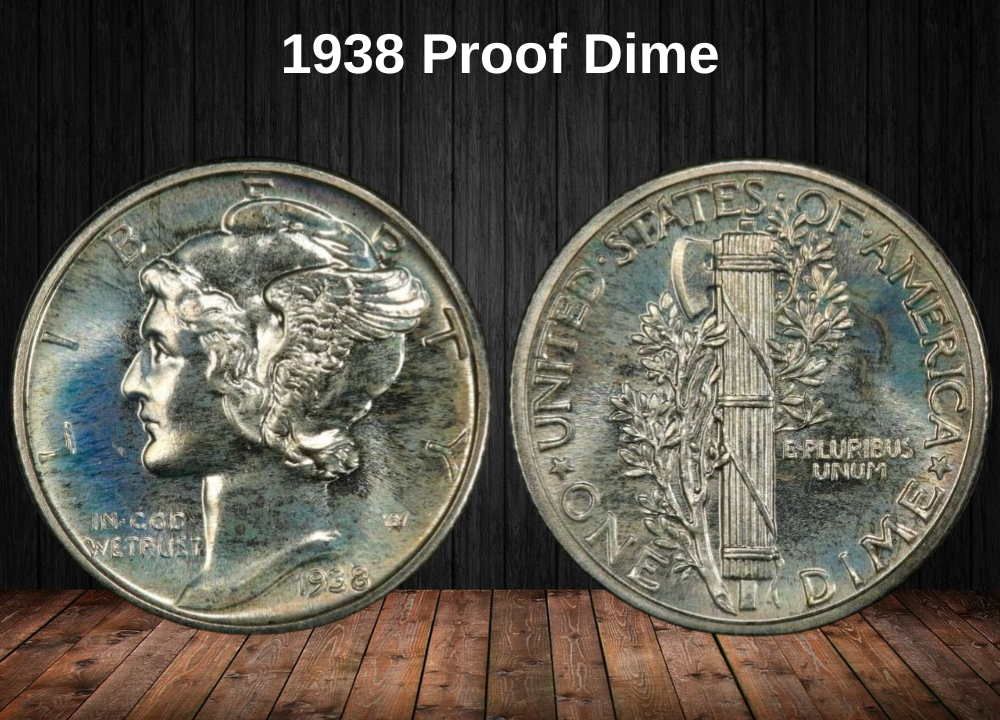
Proof dimes were struck only in Philadelphia for collectors. They were not intended for circulation and were produced with special dies and polished planchets.
- A PR65 1938 proof dime is valued at around $325.
- Proofs are typically well-preserved since they were often stored in protective packaging.
1938 D Dime Value (Denver)
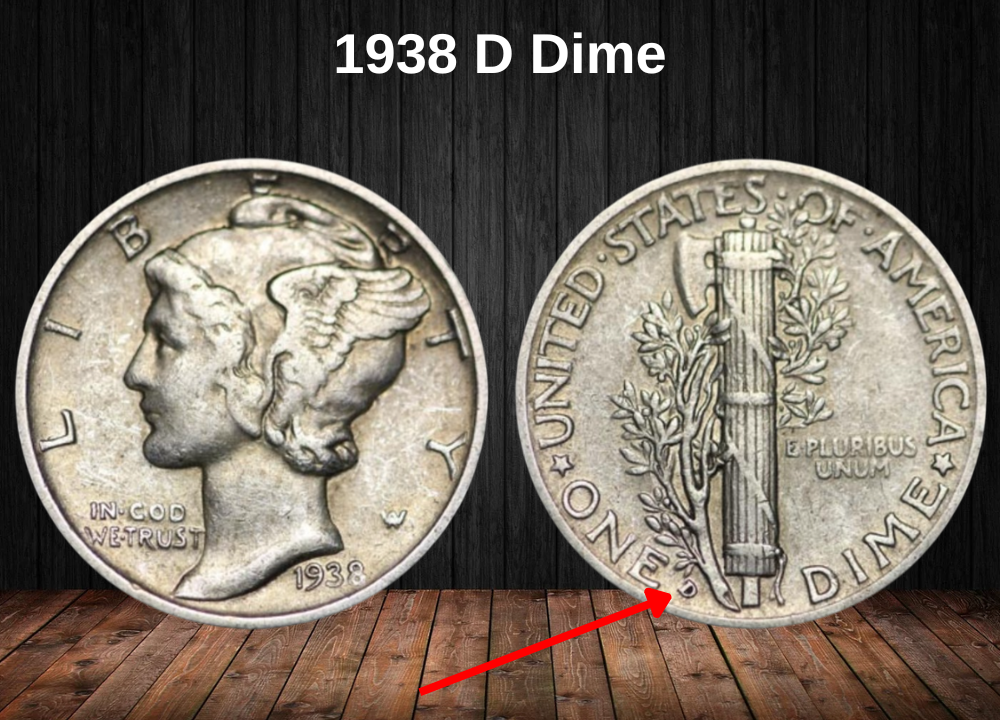
The Denver Mint produced the lowest mintage of the year, with 5,537,000 coins. While lower than the other mints, this number still makes them fairly common in circulated grades.
- MS60 value: $25
- MS65 value: $60
- Auction record (regular strike): $1,783 (MS68, 2003)
- Auction record (Full Bands): $5,635 (MS68+, 2006)
1938 S Dime Value (San Francisco)
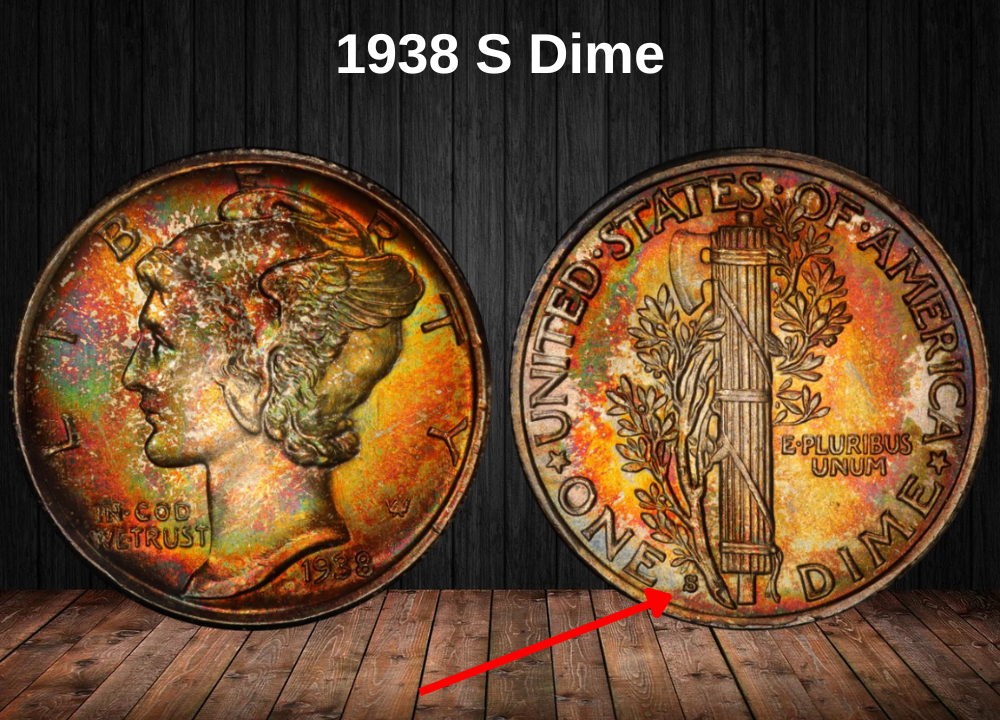
The San Francisco Mint struck 8,090,000 dimes in 1938. While not rare in lower grades, they are scarcer in higher Mint State grades compared to Philadelphia and Denver coins.
- MS60 value: $30
- MS65 value: $65
- Auction record (regular strike): $776 (MS68, 2004)
- Auction record (Full Bands): $364,250 (MS68+FB, 2019) — the highest known sale of a 1938 dime.
Rare 1938 Dime Error Lists
While the 1938 Mercury Dime is not especially known for dramatic mint errors beyond the Full Bands (FB) designation, some error varieties do exist. These can add significant collector interest and sometimes increase the coin’s value.
Doubled Die Error
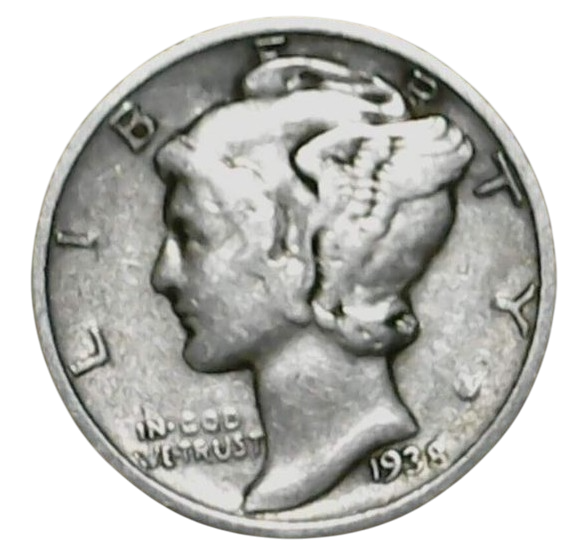
A doubled die error occurs when the die itself has been engraved with a duplicated image. Coins struck with such dies show doubling on certain design elements, such as the lettering, numbers, or details of Liberty’s cap. This is one of the most desirable error types for collectors.
Repunched Mint Mark (RPM) Error
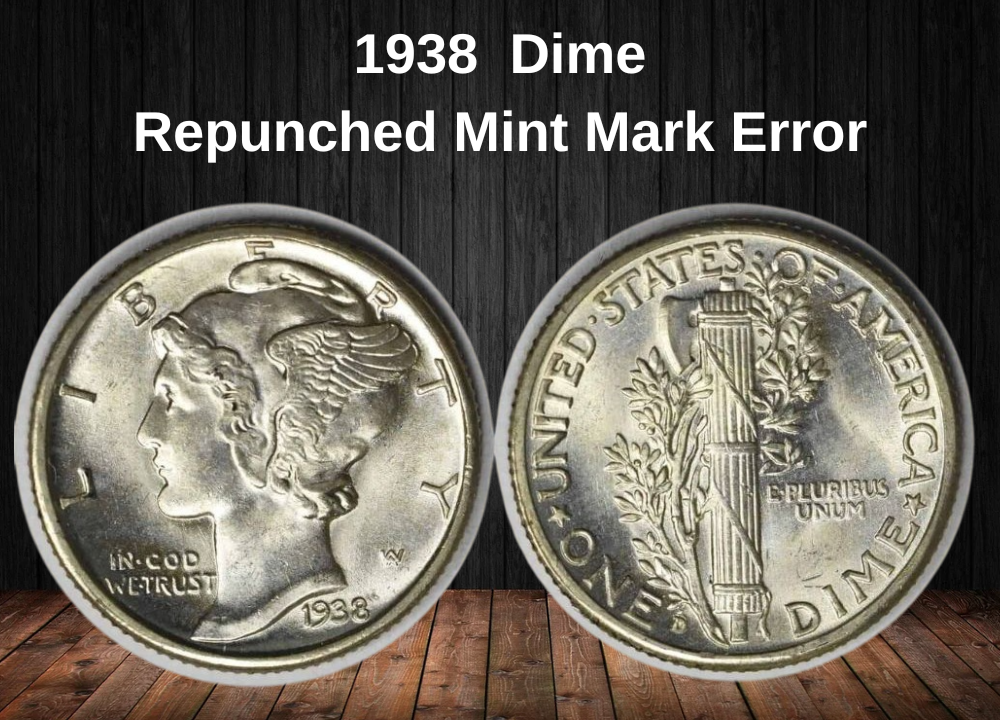
Before the 1990s, mint marks were hand-punched into dies. If the first strike was misaligned, the worker would punch the mint mark again. The result is a Repunched Mint Mark (RPM), which appears as two slightly offset mint marks on the same coin. For 1938, this is most often seen on Denver (“D”) and San Francisco (“S”) coins.
Die Crack Error
As dies aged, they could develop cracks. When such a die struck planchets, the resulting coins displayed raised lines or ridges across the design. These cracks can range from faint hairlines to prominent marks, depending on the die’s condition.
Die Break Error (Cud Error)
A more advanced stage of die deterioration, die breaks occur when a section of the die actually chips or breaks off. Coins struck with a damaged die will show raised blobs or missing portions of the design where the die material was lost. Larger breaks are often called “cuds”, and they are highly collectible.
Where to Sell Your Dime Coin?
Now that you know the value of your dime, the next step is deciding where to sell it. There are several trusted options—both online and in person—that can help you get the best price depending on your coin’s rarity and condition.
To see the full list of recommended places, along with their advantages and disadvantages, check our complete guide on where to sell your dime coins.
FAQ about the 1938 Mercury Dime Value
What makes the 1938 Mercury Dime valuable to collectors?
The value of the 1938 Mercury Dime lies in its silver content, historical design, and relative scarcity in higher grades. While circulated examples are common and affordable, uncirculated coins with strong strikes—especially those with the Full Bands (FB) designation on the reverse—can command high premiums. Auction records show that rare high-grade specimens can be worth hundreds or even thousands of dollars.
How does the mint mark affect the value of a 1938 dime?
Three varieties exist: No Mint Mark (Philadelphia), D (Denver), and S (San Francisco). In lower grades, their values are almost identical. However, in higher grades, the San Francisco and Denver issues tend to bring slightly more, with San Francisco FB coins being the most sought after due to their relative scarcity and auction history.
Why are Full Bands (FB) 1938 dimes worth more?
The Full Bands designation refers to the fully separated horizontal bands on the fasces on the reverse. These are difficult to strike sharply, so coins with clear and complete bands are rarer. Collectors prize them because they represent superior strikes and better preservation, often multiplying the coin’s value.
What is the value of a 1938 proof dime compared to circulation strikes?
The Philadelphia Mint produced proof coins in 1938, with around 8,728 struck. Proof coins were not intended for circulation and display mirror-like surfaces and sharp details. A proof graded PR65 is worth around $325, and higher grades or cameo contrasts can bring much more. In contrast, circulated strikes are far less valuable unless in exceptional condition.
How does grading impact the price of a 1938 dime?
Grading is crucial. A dime in Good (G4) condition may be worth only $4–$5, while a coin graded MS65 could fetch $60+ depending on the mint. For Full Bands examples, values skyrocket in the higher Mint State range, with auction records surpassing six figures for pristine FB specimens.
Are error coins from 1938 more valuable?
Yes, although 1938 Mercury Dimes are not famous for dramatic errors, examples with doubled dies, repunched mint marks (RPM), die cracks, or die breaks can command premiums. Error values depend on rarity, severity, and eye appeal, with dramatic or unique errors often fetching far more than regular strikes.
What is the highest recorded auction price for a 1938 Mercury Dime?
The highest known auction record is for a 1938-S Full Bands dime, graded MS68+FB, which sold for $364,250 in 2019. This extraordinary price highlights the extreme rarity and desirability of high-grade FB examples. Regular strike 1938 dimes in top grades, without FB, generally sell for far less—typically under $2,000.

